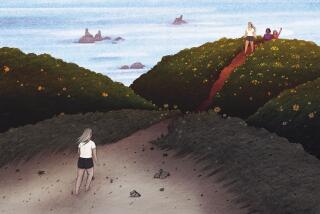The Next Step for Motherhood
- Share via
Two conflicting views of mom have threaded through American popular culture in the past three decades. There’s the “June Cleaver” straight from the 1950s sitcoms, all-sacrificing, blissful, wanting nothing beyond hearth and home. Or there’s her evil twin, Anti-June, the revisionist image that emerged in the wake of the women’s movement. She’s the miserable mom, anxious and depressed, who regrets that she gave up her life for her kids.
In either view, the most important fact about a woman was that she was a mother. Today, the either-or image is outdated, according to our major study of full-time employed couples funded by the National Institute of Mental Health. We are beginning to see the outlines of what might be called the new motherhood, which avoids both extremes. In this view, motherhood is just one event in a life that is filled with many others.
For these women, whose average age was 35, having children had no impact on their level of stress. This is not to say that having a child isn’t a wonderful experience, but it is no longer the utterly life-transforming event. It is simply an important event in the continuum of her life.
In another study, sociologists Elaine Wethington and Ronald Kessler reported that having a child was not related to psychological distress but leaving the labor force was. Thus only when a woman had a child and significantly reduced her commitment to work did her distress increase.
Our study did not find the anxiety and depression associated with motherhood that earlier studies found. Indeed, mothers reported lower distress levels than did nonmothers. In our study, 80% of the women went back to work in the first year after birth of a child. So many of the issues facing women who find themselves home alone with children--isolation, boredom, loss of freedom--were for these women only a time-limited phenomenon. They did not pine for their colleagues at work or miss the challenge of a job. Even when they were at home, they felt themselves connected to the workplace.
Clearly, it is time to redefine motherhood as one important and rewarding part of a woman’s life, but not the totally defining event. In the years ahead, women will choose from a number of parenting options. Many women will stay in the work force after a maternity leave and combine mothering and working. Some may take time out when their children are young, keeping their skills honed, planning for a return. Some will choose shift work so that mother and father will share parenting time with the children. Few women will leave the work force after the birth of a first child and never return.
But if that ‘50s style of mothering has vanished, so too has the ‘70s belief that to have a life of work and accomplishment, a woman has to pass up motherhood. When sociologist Kathleen Gerson studied women who were born in the ‘50s, a sample close in age to our study, she found that these women did not feel they had to choose between a career and motherhood. The debate about whether a woman can be both a mother and be employed is moot. The question of how to do both is very much alive.


